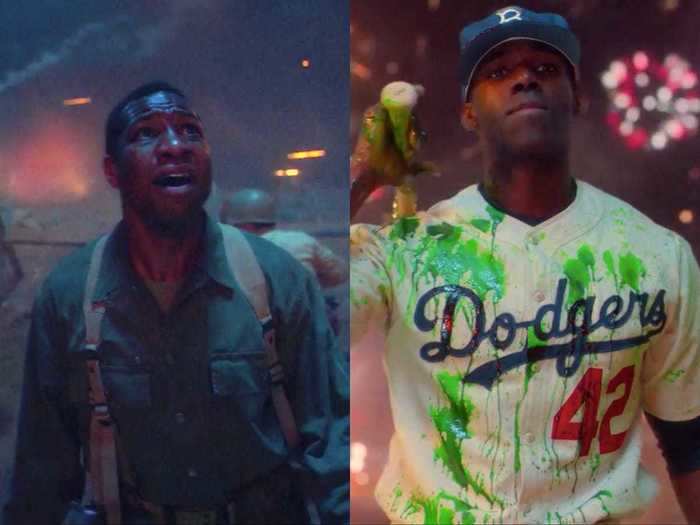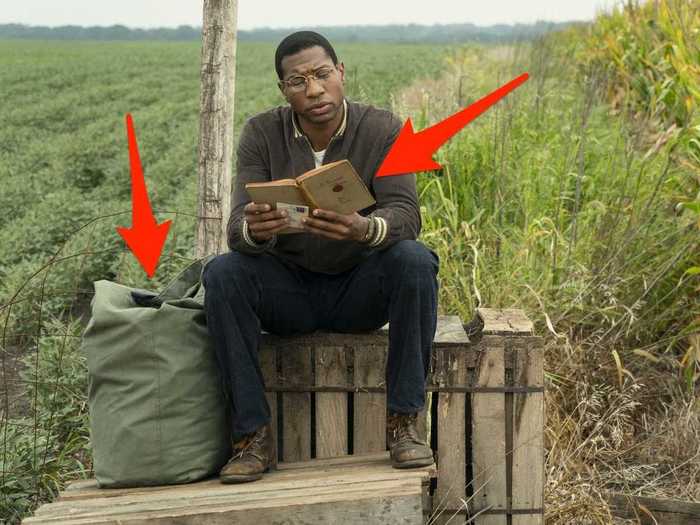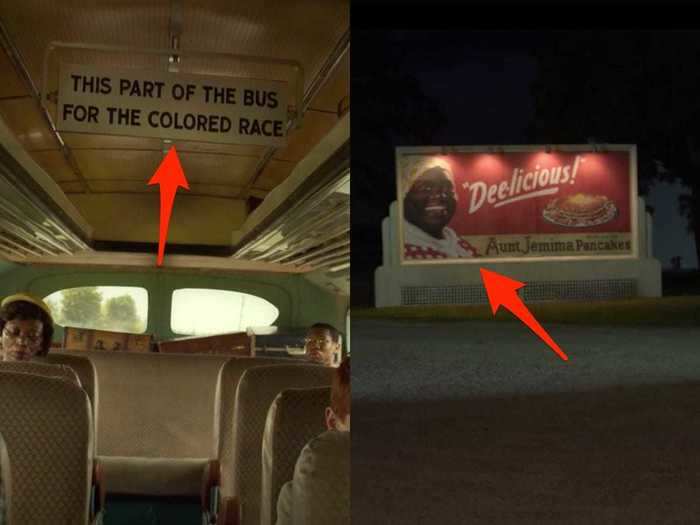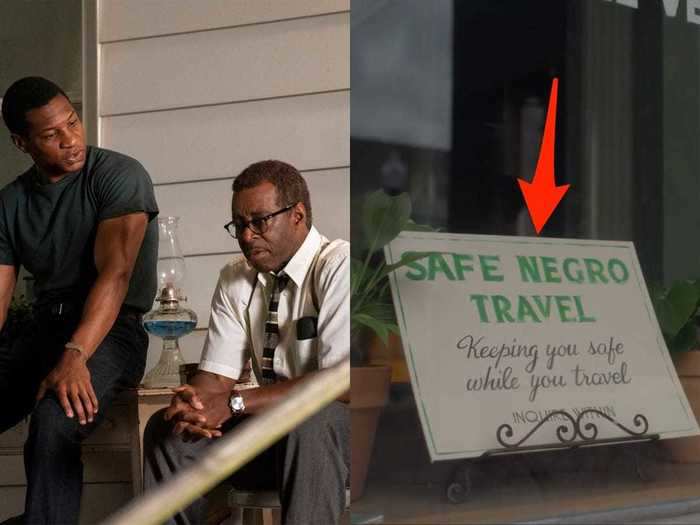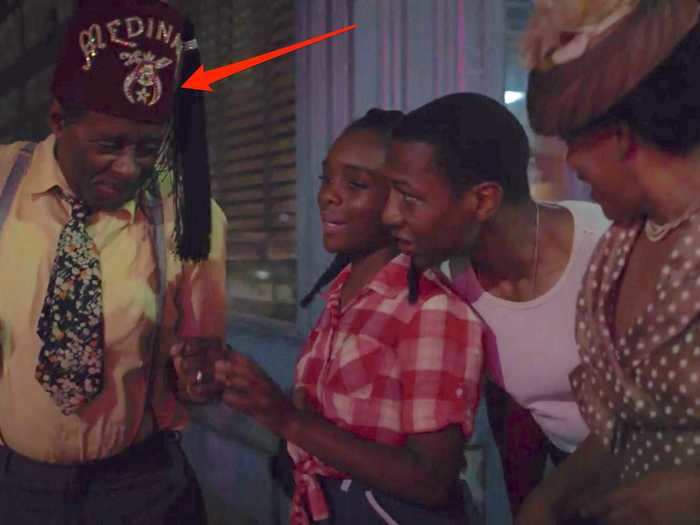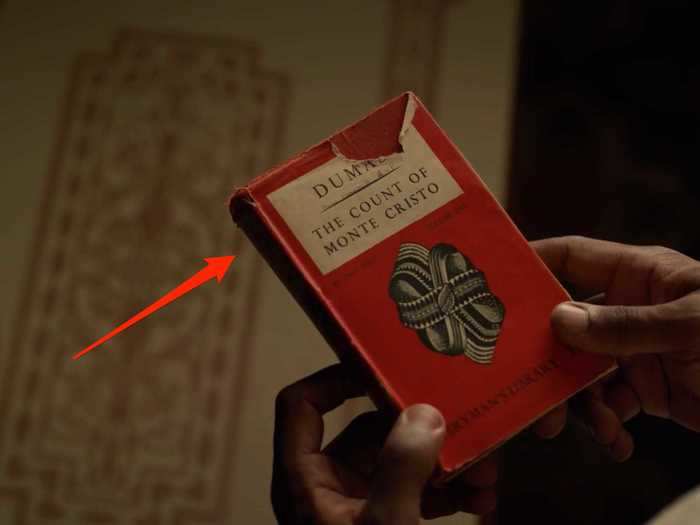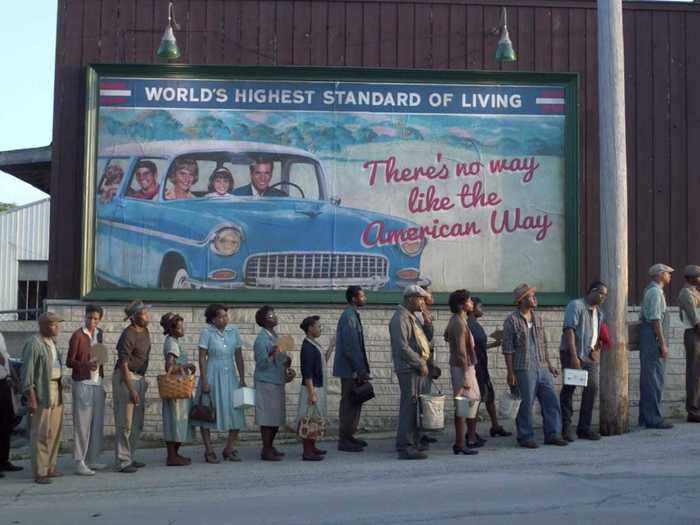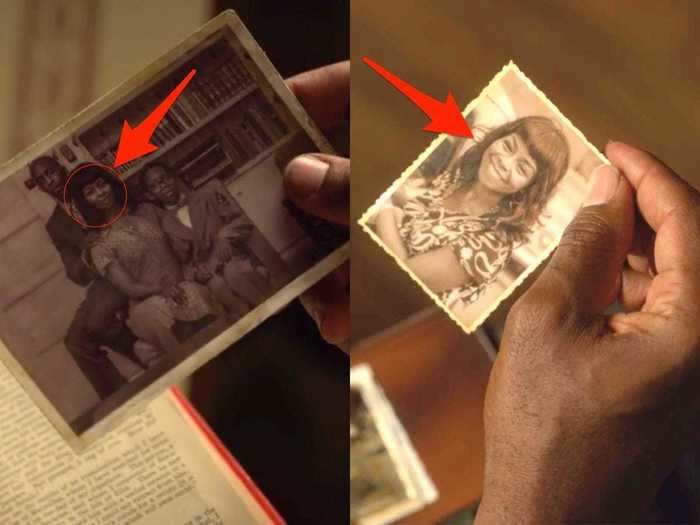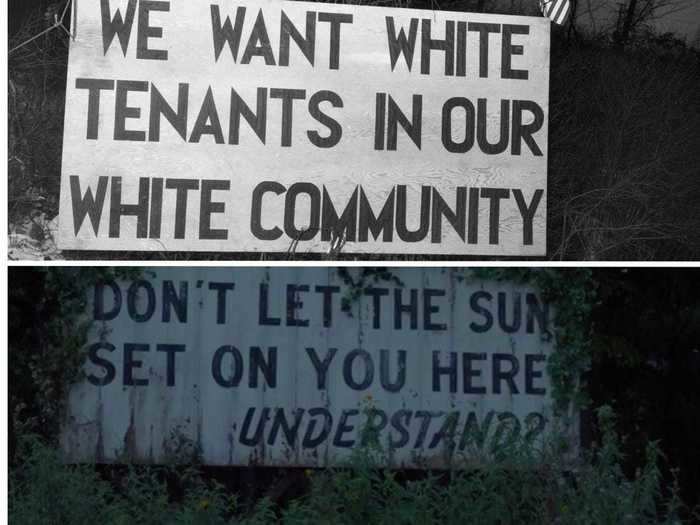Jonathan Majors plays Tic on "Lovecraft Country."Elizabeth Morris/HBO
- "Lovecraft Country," HBO's new sci-fi series, takes place in the 1950s, and is packed with historical references to the time period.
- As Black Americans, the show's main characters experience racism at every turn, from segregated buses to the dangers of "sundown towns."
- There are also several clues throughout the show that point towards major plot revelations down the line.
- Here's a guide to details and historical references on "Lovecraft Country" that you might have missed.
- Warning: This post contains spoilers for "Lovecraft Country."
HBO's new show "Lovecraft Country" takes place in the 1950s, and is packed with historical references and hidden clues to future plot revelations.
The series focuses on Atticus "Tic" Freeman (Jonathan Majors), a young Korean war veteran who's desperate to find his father and learn more about his mysterious ancestry. Joining Tic on his journey for answers is his father's brother, Uncle George (Courtney B. Vance), and Tic's childhood friend Leticia "Leti" Lewis (Jurnee Smollett).
As the group travels through the Jim Crow south on their way to find Tic's missing father, they experience racism at nearly every turn, from segregated movie theaters to the terrors of "sundown towns."
And hints about Tic's ancestry, as well as the whereabouts of his father, are hidden in books and soundtrack selections throughout the first episode, too.
Here's a guide to all of the details and references you might have missed on "Lovecraft Country."
The first scene features dialogue from the 1950 film "The Jackie Robinson Story."
"Lovecraft Country" opens with a fantastical battle sequence.
HBO
In the show's first scene, Tic struggles to defend a mysterious Martian princess from a monster that appears to be Cthulhu, one of HP Lovecraft's most famous monsters.
Before Tic can intervene, however, Jackie Robinson shows up and smashes Cthulhu to a pulp, soundtracked by narration from the 1950 biographical film "The Jackie Robinson Story."
The scene is quickly revealed to be a dream, conjured by Tic who fell asleep on a bus. Still, the dialogue from "The Jackie Robinson Story" is pretty relevant to the events that are about to unfold.
The book Tic reads in the first scene is a real life sci-fi novel written by Edgar Rice Burroughs.
Jonathan Majors plays Tic on "Lovecraft Country."
Elizabeth Morris/HBO
After the bus he's traveling on breaks down, Tic departs, along with the other riders, and decides to read to pass the time.
Later, while talking to a fellow passenger, he reveals that the book he's reading is a (real-life) sci-fi novel called "The Princess of Mars."
First published in 1912, the novel focuses on a former Confederate soldier named John Carter as he's mysteriously transported to Mars, and falls in with a group of Martian warriors.
The character's past as a Confederate soldier draws some criticism from his fellow passenger when Tic explains the plot — foreshadowing the conflicts that will occur because of Tic's love of science fiction later on.
This scene also includes a major hint about Tic's past, since he's carrying a U.S. Army duffel bag and is later revealed to be a veteran of the Korean war.
Signs of institutional racism are everywhere in the first episode.
Racism is prevalent in "Lovecraft Country."
HBO
Set in the 1950s, the series doesn't shy away from showing the real-life racism Black Americans faced during that time period.
In the first scene, Tic and the lone other Black bus rider are shown to be seated at the back of the bus (the "colored" section), which later breaks down. They're even refused a ride into town because of their race.
Even though segregated buses were determined to be unconstitutional in 1946 (thanks to a Supreme Court ruling), Southern states frequently ignored the decision and were mostly unchallenged by the federal government.
In 1961, a group of civil rights activists called the Freedom Riders rode buses across state lines to protest this lack of enforcement, usually leading to jail time and violent attacks by white supremacists.
Eventually, the ban on segregated buses was enforced, thanks to the efforts of the Freedom Riders and other activists.
Numerous other signs of racism are prevalent in the first episode as well, including segregated movie theaters and ice cream shops — the result of Jim Crow laws that weren't fully abolished until the Civil Rights Act was passed in 1964.
And as Tic, Leti, and Uncle George drive through the South and Midwest, they frequently encounter racist ads, including one for Aunt Jemima pancakes. The origins of the Aunt Jemima character are rooted in slavery, and the emblem was only "retired" in 2020.
Uncle George is the editor and publisher of a travel guide for Black Americans.
Tic (Jonathan Majors) and Uncle George (Courtney B. Vance) travel together for the guidebook on "Lovecraft Country."
HBO
Uncle George's guidebook provides Black Americans with safety tips for interstate travel, including recommendations for hotels, restaurants, and gas stations that welcome Black travelers.
It's likely based on a real-life travel guide called "The Negro Motorist Green Book," which was published from 1936 to 1966, at the height of Jim Crow laws.
Given the violent racism still prevalent in parts of the country at the time, guidebooks like these were valuable resources for Black travelers, who were increasingly turning to road trips to avoid segregated trains, buses, and airplanes.
But guides like Uncle George's eventually became obsolete, following the passage of the Civil Rights Act in 1964.
Uncle George appears to wear a Shriners' fez in one scene.
Courtney B. Vance (left) plays Uncle George.
HBO
Tic finds a copy of "The Count of Monte Cristo" in his father's apartment — hinting at Montrose's fate.
Books feature prominently on "Lovecraft Country."
HBO
Completed in 1844, this novel by Alexandre Dumas focuses on a man who's wrongfully imprisoned, and then escapes. He eventually amasses a fortune and takes revenge on those who conspired against him.
Tic finds several copies of "The Count of Monte Cristo" in his father's apartment when he returns to Chicago. Montrose's fate isn't revealed until the following episode, but those familiar with Dumas' novel will find many similarities between the two characters' situations.
A famous historical photograph is recreated in one shot while a clip of James Baldwin plays in the background.
This shot recreates a famous historical photo.
HBO
The clip in question comes from a 1965 debate between Baldwin and conservative author William F. Buckley. In the debate, Baldwin famously argued, "The American Dream is at the expense of the American Negro."
While it took place nearly a decade after "Lovecraft Country" is set, Baldwin's arguments still resonate within the context of the show.
Also included in the scene is a recreation of a famous historical photograph.
While driving across the country, Tic, Leti, and Uncle George pass by a line of Black Americans waiting for the bus. A poster behind them ironically claims "There's no way like the American way," and says the U.S. has the "world's highest standard of living."
It's a striking shot regardless, but it's also a near-perfect replication of a 1937 photograph of flood victims in Louisville, Kentucky. Taken by Margaret Bourke-White for LIFE magazine, the photo shows Black Americans lined up outside of a relief agency after the disaster — with the same billboard ironically centered behind them.
Uncle George has a picture of Tic's mother in his wallet.
Tic finds a picture of his family in Montrose's copy of "The Count of Monte Cristo."
HBO
We first see Tic's mother in an old family photograph that Montrose had tucked away in his copy of "The Count of Monte Cristo." But later, Uncle George pulls out another picture of Tic's mother from his wallet.
The next episode elaborates more on the connection between Uncle George and Tic's mom, but this is the first time it's suggested to viewers that she and George were more than just friendly relatives.
At the end of the first episode, Tic, Leti, and Uncle George have a terrifying experience in a "sundown town" — a racist, real-life occurrence in the Jim Crow south.
The top image shows a sign placed across from the Sojourner Truth housing project in Detroit, Michigan, in 1942. The bottom is a billboard encountered by the characters on "Lovecraft Country."
Arthur Siegel/Anthony Potter Collection/Getty Images and HBO
During the era of Jim Crow laws, "sundown towns" — places where Black Americans or other people of color weren't welcomed after dark — were present across much of the U.S., especially the South and Midwest.
Tic, Leti, and Uncle George barely manage to escape with their lives after getting caught by law enforcement in one such town, whose racist, historically-accurate billboard (the full text reads: "N-----s, Don't let the sun set on you here") is shown earlier in the episode.
While the characters on "Lovecraft Country" are able to survive their experience in the sundown town, many Black people in real life faced violence, intimidation, and harassment if they were caught in one after dark.

